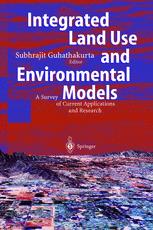

Most ebook files are in PDF format, so you can easily read them using various software such as Foxit Reader or directly on the Google Chrome browser.
Some ebook files are released by publishers in other formats such as .awz, .mobi, .epub, .fb2, etc. You may need to install specific software to read these formats on mobile/PC, such as Calibre.
Please read the tutorial at this link: https://ebookbell.com/faq
We offer FREE conversion to the popular formats you request; however, this may take some time. Therefore, right after payment, please email us, and we will try to provide the service as quickly as possible.
For some exceptional file formats or broken links (if any), please refrain from opening any disputes. Instead, email us first, and we will try to assist within a maximum of 6 hours.
EbookBell Team

5.0
30 reviewsThis volume is the result of an invited symposium titled "Integrated Land-Use and Environmental Models: A Survey of Current Applications and Research" that was held in October 2000 at Arizona State University. The idea for the symposium arose from a belief held by many academics that we are at the watershed of a new generation of models that are more dynamic, more pragmatic, more interdiscipli nary, and more amenable to collaborative decision making. Several academics and professionals engaged in urban research had long realized that domain-specific knowledge was inadequate for understanding and managing urban growth. While interdisciplinary approaches have become critical in most social research, one general area of knowledge that stands out as having the most wide-ranging impact on current urban modeling efforts is the field comprised of environmental sciences and ecology. The symposium offered a forum for academics and professionals engaged in urban and ecological modeling to exchange ideas and experiences, specifically in areas that overlapped urban and environmental issues. The contri butions to this volume highlight the progress made in the various efforts to build integrated urban and environmental models. More importantly, each chapter shows how ideas have diffused across disciplinary boundaries to create better policy-relevant models. In addition, this book outlines some promising areas of research that could make important contributions to the field of urban and envi ronmental modeling. Integrated thinking about urban and environmental issues has been fundamental to the concept of sustainability.